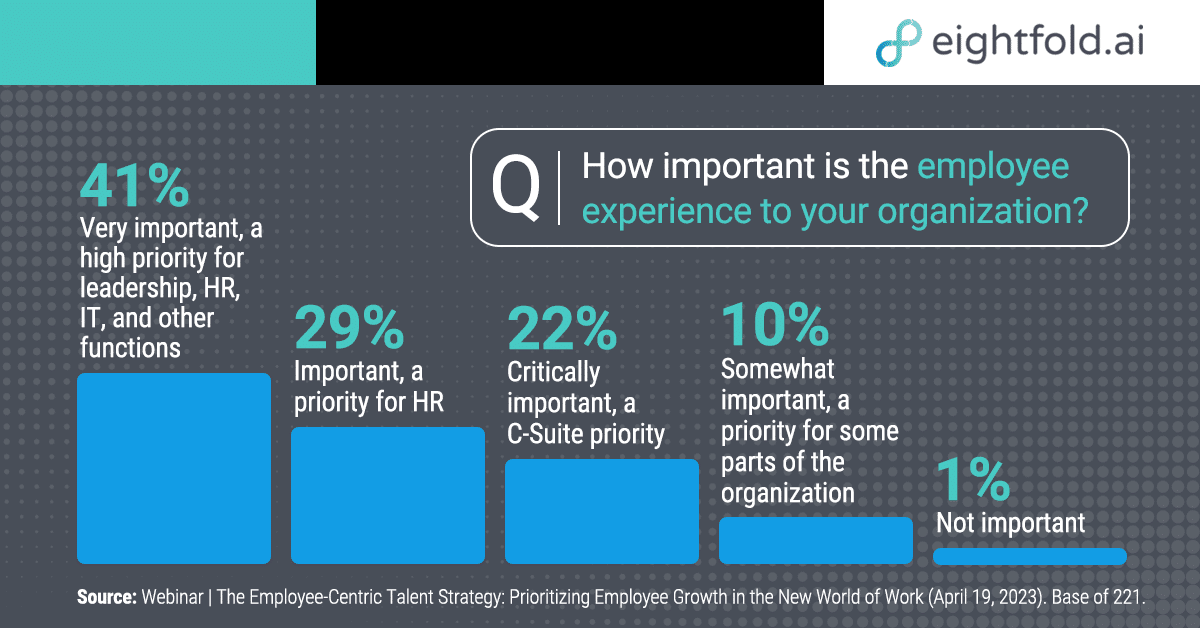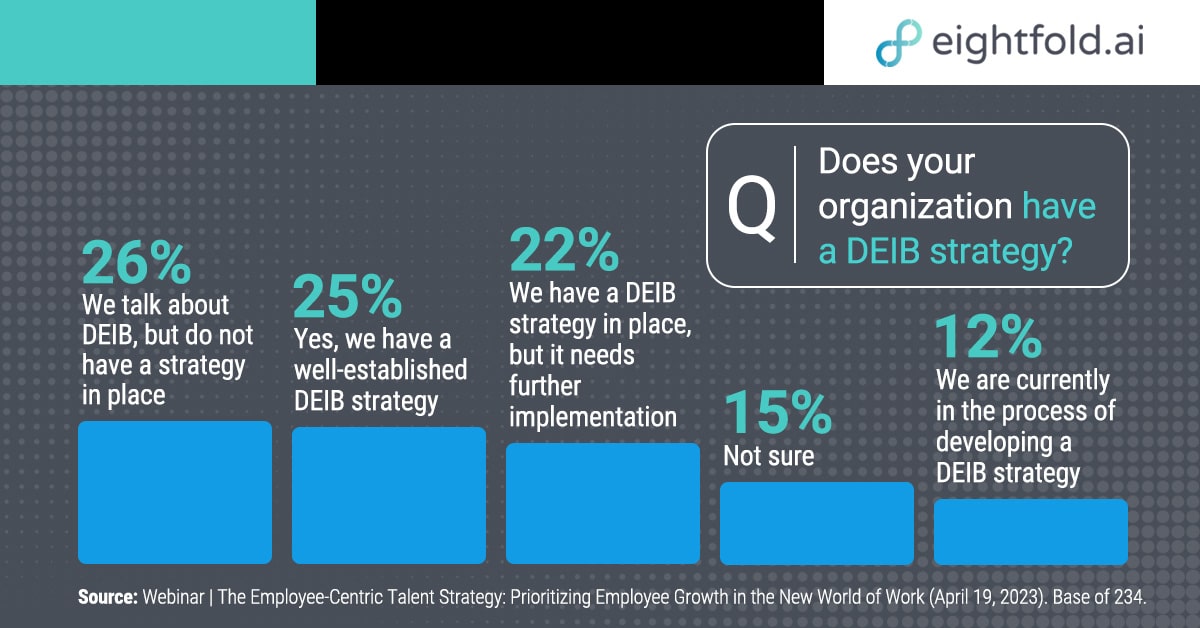Change is a constant, but the pace has dramatically accelerated. From where we work, to how we work, and what employees expect, this new age of work will continue to face a rapid pace of disruption — and with that, many opportunities to create an ideal employee experience.
With layoffs and companies reinstating return-to-office mandates, we’ve seen the pendulum swing back in favor of employers, though still not to pre-pandemic levels. But that doesn’t mean business leaders can forget about creating employee experiences to help them be more agile and adaptable for the next disruption. To successfully navigate this new era of work and stay competitive, organizations must adopt people-centric processes, then create a strategy that can evolve to best serve organizational and employee needs.
So how do organizations engage employees through the next era of work? I recently sat down with Greg Selke, Vice President and HR Value Advisor at SAP SuccessFactors, to discuss the steps organizations can take now to improve employee satisfaction, productivity, and retention.

“Employee experience is no longer something standalone that rests with whoever does the employee engagement survey,” Selke said. “The employee experience is embedded in everything we do across the HR landscape. Because employee brand is more important than ever, organizations must get the experience right to attract and keep talent.”
The SAP SuccessFactors Growth and Insights team recently conducted a survey of approximately 300 people about the employee experience. The results revealed four essential ways organizations can create an agile and flexible employee experience that evolves as needs change — and supports the business.
Related content: Read our latest report on why skills are essential to navigating a recession.
Know your workforce
Most organizations know more about their people on day one than day 365. After the initial recruiting, interviewing, and onboarding processes, many organizations lack the cultural processes to continue learning more about their talent.
This is detrimental to the organization and the employee. Business leaders don’t know what skills and potential they have in-house, and employees who aren’t given learning or advancement opportunities after a year or two are more likely to move on.
Selke said that prospective employees want to know their career options on the first day and have a clear path on how to reach their goals even as business objectives and ways of working rapidly evolve. They also want confirmation they made the right decision to join their new employer early on with no buyer remorse.
“More than ever, people are looking for meaning and purpose out of their work experience,” Selke said. “It’s very important that organizations figure out how to do that, which includes upskilling, reskilling, helping people grow, [and] creating the right environment to do so.”
For example, an Eightfold customer welcomes new hires with the message that they hope the new team member stays a long time, but should they decide to depart during their tenure, they promise that the employee will leave the organization with a more robust set of experiences. New employees are given the message that their professional development is important, with a strong learning culture and growth mind-set in place to support them on their career journey.
Organizations can start by asking themselves if they have a full view and understanding of their people’s skill sets and what is happening in their industries at large so they can set their employees up for success. Upskilling/reskilling, learning and development, and opportunities for new projects/roles and advancement should be visible to both HR teams and employees. This is all possible with a skills-based approach to talent planning that incorporates real-time insights into identifying the skills gaps they need to fill.
Adopt emerging technologies
New technologies — especially driven by generative AI and the emergence of tools like ChatGPT — are emerging every day. How do HR leaders cut through all the noise to ensure they’re not only adopting the right technologies, but also ensuring they have the right plans for change management to support using those technologies?
In an effort to reduce attrition and demonstrate commitment to its employees, a large bank decided to structure talent around internal mobility. With AI, the organization matched employees with the right emerging internal opportunities and helped them understand what they needed to accomplish to move into those roles. At the same time, the organization used employee data to better understand their people so leaders could more proactively plan their workforce needs.
Selke said that AI makes it possible to create this personalized journey and provide upskilling opportunities. However, many employees are often skeptical and apprehensive, often worrying that AI will go as far as determining their performance reviews. He said that organizations need to focus on messaging and transparency when introducing AI into the business.
“If you are using AI in your organization, you need to be able to explain to everyone — general counsel, employees, and customers — what you are doing, why you are doing it, and what you learn from AI,” Selke said. “You need to be able to explain all of this information in a transparent and honest way.”
Embrace DEI
When an organization focuses on skills and skill adjacencies instead of degrees, they almost always find employees with learnability in a new space. In doing so, they expand both the internal and external potential talent pool and the potential career paths for current employees, which often increases diversity in the organization. However, DEI efforts must be intentional and sustainable to create a lasting impact.

“When you focus on meaningful DEI programs, employers are creating the kind of environment that makes an employee feel as though they belong and that their work really matters,” Selke said.
Organizations that value supporting diversity realize significant benefits due to the increase in available talent and fresh perspectives. In addition, diverse organizations just perform better with increased productivity and innovation, better brand image, higher retention rates, and of course, increased profits.
A McKinsey study found that organizations in the top 25% for racial and ethnic diversity are 35% more likely to have financial returns above their respective national industry medians. Additionally, the study found that companies in the top quartile for gender diversity are 15% more likely to have financial returns above their respective industry medians.
When revisiting how diversity can have a positive impact on business performance in a follow-up report, McKinsey found the business case for improving diversity is still strong. Top-quartile companies outperformed those in the bottom quarter by 36% in profitability, with “the likelihood of outperformance” continuing to be higher based on ethnicity than gender.
Related content: Read about best practices for implementing a hybrid work strategy.
Prepare people leaders
Organizations that promote their best salesperson to sales manager may end up surprised when it becomes clear they are an ineffective leader. Why? Because people who are skilled in a certain area don’t necessarily have the leadership skills needed to manage people.
It’s even harder to assess leadership qualities with external hires. However, when you build your team internally, with the right view of your data and your people’s skill sets, you have a much better ability to assess and build employees’ leadership skills — and even see who could be great in your succession planning.

“Going forward, there needs to be a lot of focus on assessing talent for these management roles — and how to help them not burn out and be successful,” Selke said.
An organization’s ability to prepare leaders is a significant indicator of future success. Leadership is critical at all levels, both today and tomorrow, and the importance of middle managers is often understated. By empowering people to grow in their careers, and reducing burnout, organizations create a more resilient workforce ready to transform with change.
Identifying and preparing those future people leaders is even more critical in times of fast-paced change and disruption. If your organization waits for someone to leave or the next major disruption to start identifying leaders to step up, it’s too late to set them up for success.
Everyone needs a skills-based plan
The competition for in-demand talent — especially those with rising skills around new technologies like generative AI — will still need a flexible approach. But creating an intriguing employee experience goes well beyond remote vs. in-office work. Even if employers have more power today than they did in the past few years, top employees still expect an experience with multiple opportunities for using new technologies, upskilling and reskilling, and internal mobility. If organizations don’t keep up with technology or people’s needs, they’re at risk of being left behind.
Skills-based talent planning gives talent and business leaders an accurate view of people’s abilities and potential. With the help of talent intelligence, it’s now easier than ever to identify employees ready for the next challenge — and boost any bottom line. And that creates lasting, meaningful, and honest experiences for everyone.
Watch the full conversation with SAP SuccessFactors’ Vice President and HR Value Advisor Greg Selke and Eightfold AI’s Carly Ackerman, Director, Customer Experience for VIP Accounts & Partnerships, on-demand now.










